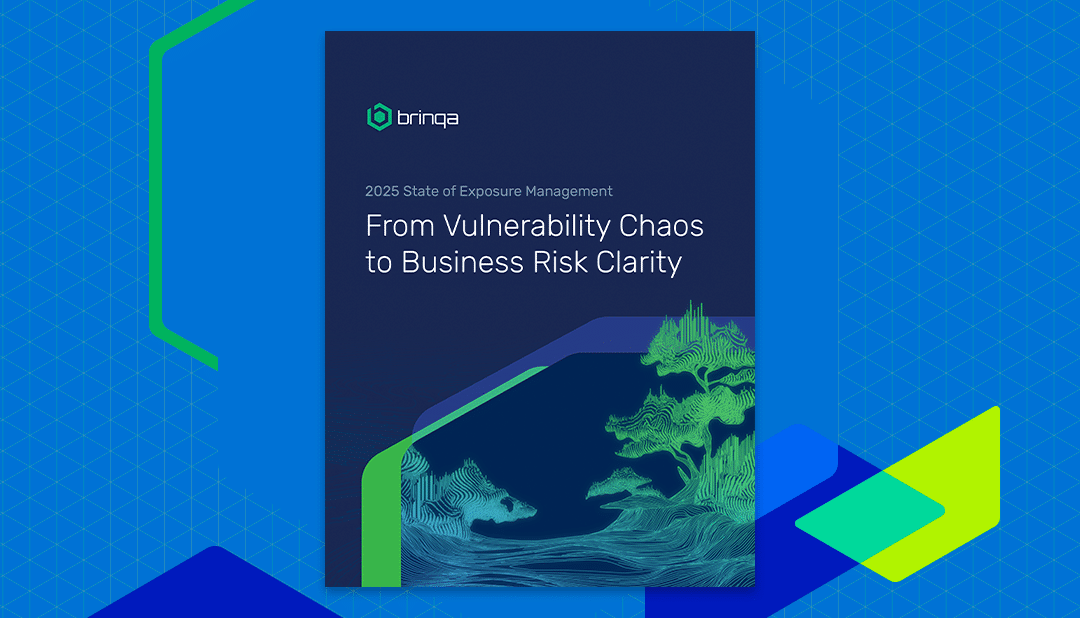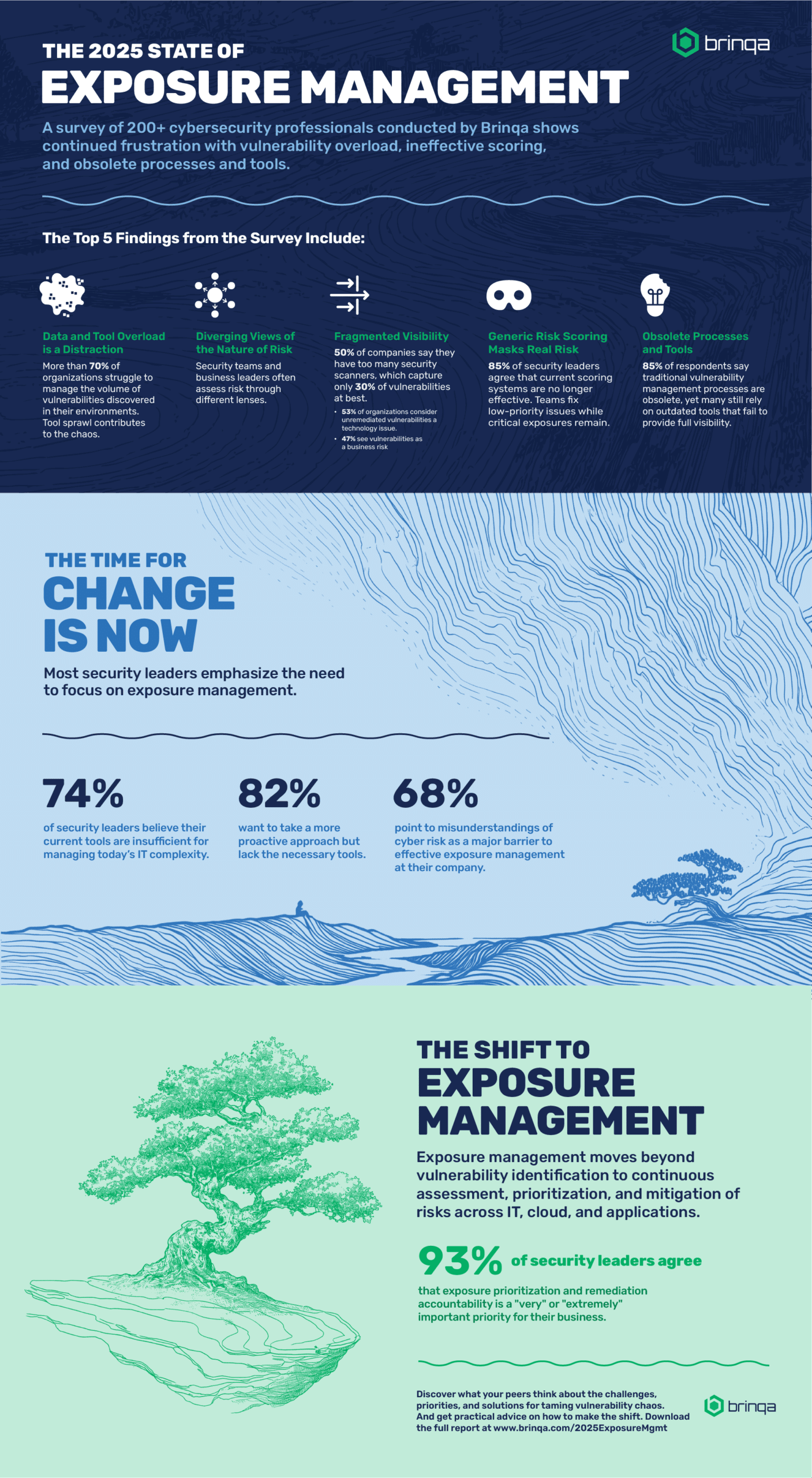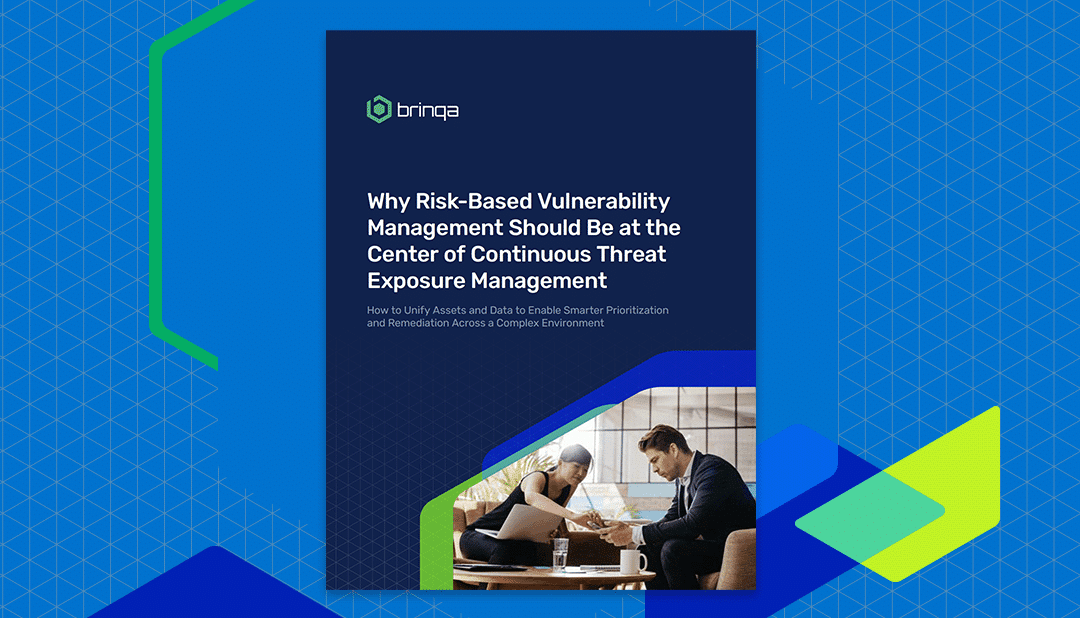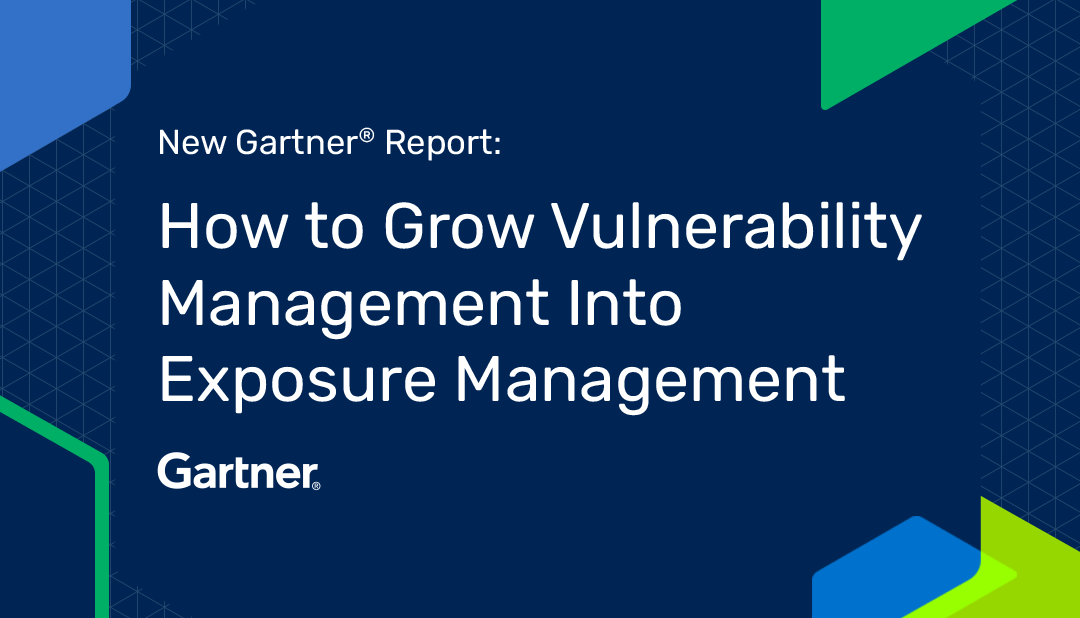
2025 State of Exposure Management: The Results Are In

From Vulnerability Chaos to the Clarity of Exposure Management: Why Security Leaders Are Rethinking Risk in 2025
It’s no secret that vulnerability management has become one of the most difficult, thankless jobs in cybersecurity. Despite decades of investment in scanning tools, ticketing systems, and compliance checklists, breaches linked to known but unpatched vulnerabilities continue to dominate the headlines.
Security teams know where the problems are—but prioritizing them, resolving them, and communicating risk in a way that drives action has never been harder. This untenable situation led Brinqa to survey over 200 cybersecurity professionals to capture the challenges and trends behind this evolving reality. The results, published in our 2025 State of Exposure Management Study, found that 93% of leaders now view exposure management as a top business priority—yet 57% report that known exposures still go unpatched.
The Story Behind Vulnerability Management’s Breaking Point
At its core, traditional vulnerability management has always focused on detection and volume: scan everything, find everything, patch as much as you can. But that model is buckling under the weight of modern attack surfaces:
- Explosion of Assets: Cloud environments, remote workforces, and DevOps pipelines have vastly expanded the number of systems, apps, and services that need protection.
- Fragmented Visibility: Most organizations now operate dozens of security tools that don’t fully integrate, leading to blind spots and duplicate efforts.
- Rigid Risk Models Without Business Context: Standard severity scoring (like CVSS) rarely accounts for the business criticality, exploitability, or real-world risk tied to each vulnerability.
The result? Teams are overwhelmed. Backlogs keep growing. And security leaders are left trying to explain technical risk in business terms—with incomplete, outdated information.
The Adoption of Exposure Management is Heating Up
The challenges documented in the survey paint a clear picture of the reasons driving enterprises beyond traditional vulnerability management toward a broader, business-aligned strategy: exposure management.
Exposure management is a more comprehensive approach to understanding and reducing organizational risk. Rather than focusing purely on vulnerabilities in isolation, exposure management considers:
- Asset context (Who owns it? How critical is it to the business?)
- Threat landscape (Is the vulnerability actively being exploited?)
- Business impact (Would a breach disrupt operations, violate compliance, or cause material harm?)
- Remediation pathways (Is the issue easily fixable or strategically acceptable?)
By consolidating risk signals across infrastructure, cloud, application security, and identity systems—and enriching that data with threat intelligence and business context—exposure management helps security teams focus on what truly matters.
This approach isn’t just theoretical. It aligns with broader industry shifts toward continuous risk monitoring (such as CTEM frameworks emerging from Gartner), new SEC rules emphasizing material cyber risks, and the operational reality that patching every vulnerability is no longer feasible.
Highlights from the 2025 State of Exposure Management Study
Below are a few key highlights from the study. Be sure to download the full, 19-page report to see the complete results.
How Leading Enterprises Are Adapting
Companies like SAP, Nestlé, and Cambia have already made significant strides toward a more unified and always-on exposure management approach. By replacing spreadsheets, manual triage, and isolated scanners with integrated, context-driven platforms, they improved remediation speed, increased accountability, and shifted security conversations from backlog counts to business impact.
These case studies show that exposure management isn’t just a new buzzword—it’s a practical response to the complexity and scale of modern cybersecurity operations.
How to Use This Report
Read the survey to assess where your organization stands, to justify investments, and to learn about the best practices leading enterprises are using to turn vulnerability chaos into business risk clarity.
The full 2025 State of Exposure Management report digs deeper into these findings, explores additional trends, and reveals how security teams are rethinking their strategies and best practices for the year ahead.
Next Step: Download the Full Report
Register to access the report and schedule a demonstration of Brinqa to see how your peers are modernizing their Exposure Management practices and infrastructure.




